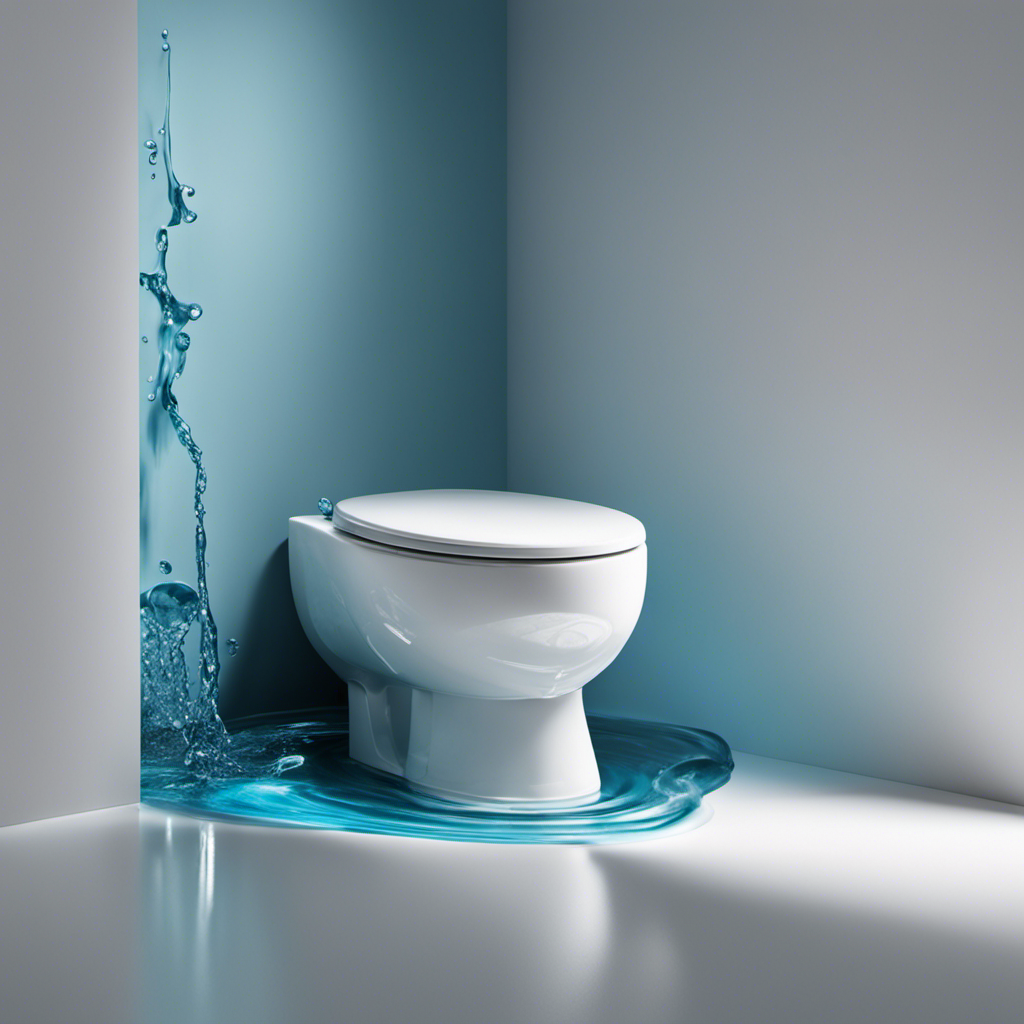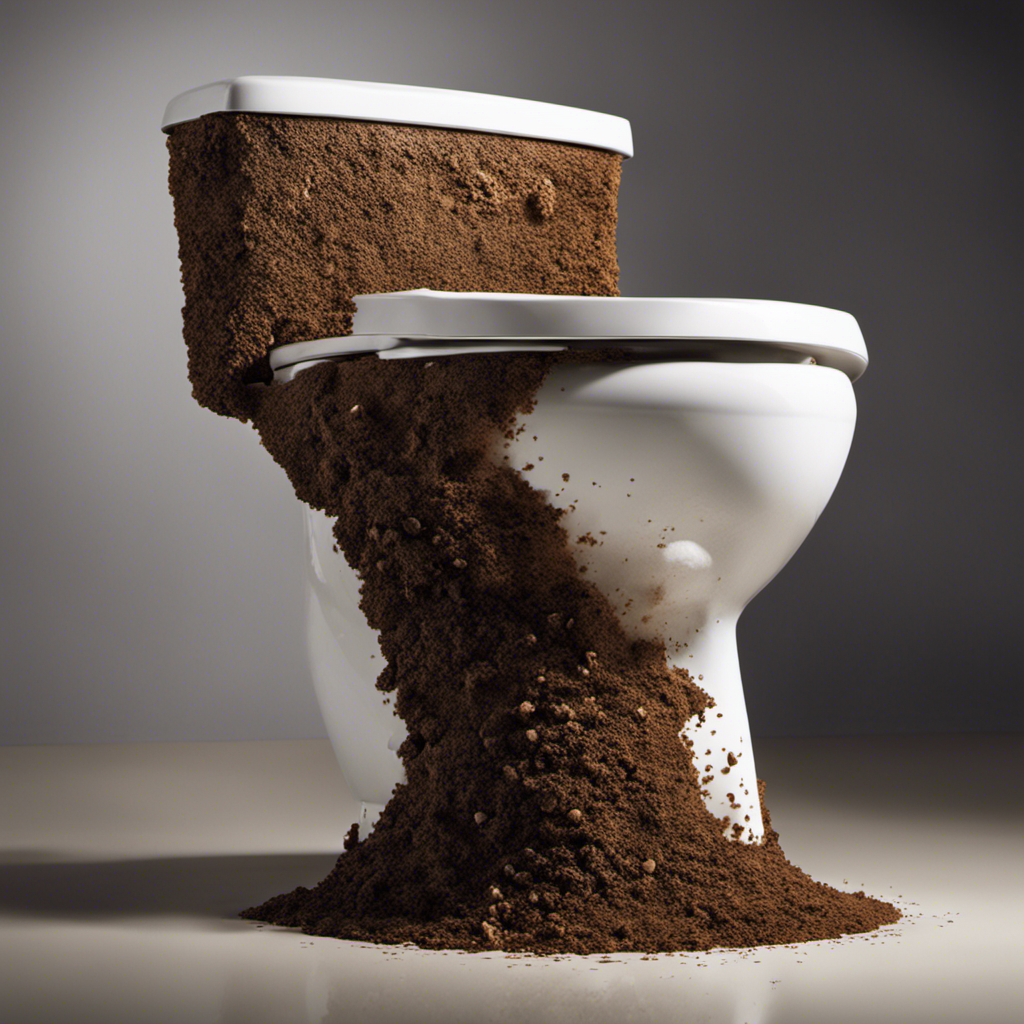Do you ever wonder why your toilet water keeps running, even when you haven’t flushed? Well, I’ve got some answers for you.
In this article, we’ll explore the common causes of constantly running toilet water and how you can identify and troubleshoot these issues.
From faulty toilet flappers to stuck toilet floats, we’ll cover it all.
So, if you’re tired of that constant running sound in your bathroom, keep reading to find out how to fix it yourself or when to call in a professional plumber.
Key Takeaways
- The most common causes of a running toilet water include a faulty flapper, worn-out fill valve, incorrect water level, and loose or damaged connections.
- Troubleshooting steps for a running toilet include checking for visible leaks, inspecting and cleaning the flapper, adjusting the water pressure, and replacing faulty components.
- A stuck toilet float can be fixed by shutting off the water supply, replacing the stuck float, adjusting the float height, bending the float arm if necessary, and adjusting the float valve.
- Tools needed for DIY toilet repairs include a screwdriver, pliers, wrench, cleaning supplies, and replacement parts such as a flapper or float.
Common Causes of Constantly Running Toilet Water
One of the most common causes of a constantly running toilet is a faulty flapper valve. The flapper valve is a rubber seal that controls the flow of water from the toilet tank to the bowl. When the flapper valve is not functioning properly, it can cause water to continuously leak into the bowl, resulting in a constantly running toilet.
This can lead to a variety of issues, including toilet tank overflow and higher water bills. When the flapper valve is faulty, it may not create a tight seal, allowing water to escape from the tank and into the bowl. This constant flow of water can not only waste water but also cause the toilet tank to overflow, leading to potential water damage.
Additionally, a constantly running toilet can significantly increase your water bills, as water is being continuously wasted. To fix this issue, you will need to replace the faulty flapper valve with a new one to ensure a proper seal and stop the constant water flow.
How to Identify a Faulty Toilet Flapper
As a plumber, I often encounter common problems with toilet flappers that can lead to leaks and water wastage.
The most common issue is a flapper that doesn’t fully seal, resulting in a continuous flow of water into the bowl. This can be caused by a worn-out flapper, a misaligned chain, or mineral buildup preventing a proper seal.
To fix flapper leaks, I recommend inspecting and cleaning the flapper, adjusting the chain length, and replacing the flapper if necessary.
Common Flapper Problems
If your toilet water keeps running, it’s likely due to common flapper problems. Flappers are rubber seals that control the flow of water from the tank to the bowl. Over time, they can deteriorate or become misaligned, causing water to continuously leak into the bowl.
Here are two common flapper problems and their solutions:
-
Flapper Replacement:
-
If the flapper is cracked or worn out, it needs to be replaced.
-
To replace the flapper, turn off the water supply, flush the toilet to drain the tank, and remove the old flapper by disconnecting it from the flush valve.
-
Install the new flapper by attaching it to the flush valve and adjusting the chain length.
-
Flapper Chain Adjustment:
-
If the flapper chain is too long or too short, it can prevent the flapper from sealing properly.
-
To adjust the chain, ensure there is a small amount of slack but not too much. This will allow the flapper to close tightly after each flush.
Fixing Flapper Leaks
To fix flapper leaks, you’ll need to check if the flapper is properly aligned and adjust the chain length if necessary. Start by removing the toilet tank lid and locating the flapper. Ensure that it is centered over the drain hole and sits flat against the flush valve. If it is misaligned, adjust it by twisting it slightly until it is in the correct position. Next, check the chain length. It should have a slight amount of slack, allowing the flapper to close fully after each flush. If the chain is too tight, it may prevent the flapper from sealing properly. Adjust the chain length as needed. If these steps do not fix the leak, it may be time to consider replacement options. Here are some maintenance tips to prevent future flapper leaks:
| Maintenance Tips | Description |
|---|---|
| Regular Cleaning | Clean the flapper and flush valve regularly to remove any debris or mineral buildup that could cause leaks. |
| Check for Wear and Tear | Inspect the flapper for any signs of wear or damage, such as cracks or warping. Replace it if necessary. |
| Use a Water-Saving Flapper | Consider installing a water-saving flapper that reduces the amount of water used per flush. This can help prevent leaks and conserve water. |
Troubleshooting a Faulty Toilet Fill Valve
The first step in troubleshooting a faulty toilet fill valve is to turn off the water supply. This will ensure that you can work on the valve without any water flowing through it. Once the water is off, you can begin diagnosing the issue.
Here are a few troubleshooting tips:
-
Check for leaks: Look for any signs of water leakage around the fill valve. This could indicate a problem with the valve itself or with the connection points.
-
Test water pressure: Low water pressure can cause the fill valve to malfunction. Use a pressure gauge to measure the water pressure coming into the toilet. If it’s too low, you may need to address the water pressure issue before replacing the fill valve.
Steps to Adjusting the Water Level in Your Toilet Tank
When it comes to troubleshooting a faulty toilet fill valve, one common issue is a constantly running toilet. To address this problem, it is important to understand how to adjust the water level in your toilet tank.
Water Level Adjustment
You should try adjusting the water level in your toilet to stop it from running continuously. Proper water level adjustment is crucial for the efficient functioning of your toilet. Here are a couple of reasons why you should pay attention to the water level:
- Maintaining the correct water level in your toilet tank ensures optimal toilet water pressure, which is necessary for a powerful flush and preventing clogs.
- A properly adjusted water level helps to conserve water by preventing unnecessary waste.
To adjust the water level in your toilet tank, follow these steps:
- Locate the fill valve, usually on the left side of the toilet tank.
- Turn the adjustment screw clockwise to lower the water level or counterclockwise to raise it.
Remember, the ideal water level should be about 1 inch below the overflow tube.
Adjusting the water level in your toilet tank will help resolve continuous running and ensure efficient water usage.
Causes of Running
If the water in your toilet tank keeps running, it is likely caused by a faulty flapper valve. The flapper valve is an essential component that controls the flow of water from the tank to the bowl. When the valve is functioning properly, it creates a seal that prevents water from continuously flowing into the bowl.
However, over time, the flapper valve can become worn out or damaged, resulting in water leakage. To fix this issue, you will need to inspect the flapper valve and replace it if necessary.
It’s important to note that maintaining the proper water pressure in your toilet tank is crucial for its overall performance. Regular toilet tank maintenance, such as checking for leaks and adjusting the water level, can help prevent running water and ensure efficient flushing.
DIY Troubleshooting Tips
To troubleshoot the issue of a constantly running toilet, try checking for any visible leaks or loose connections in the tank. This can be done by inspecting the water level in the tank and ensuring it is not too high or too low.
Additionally, check the flapper valve to ensure it is properly sealing the flush valve opening. If there are no visible leaks or loose connections, it may be necessary to adjust the water pressure in the toilet tank. This can be done by adjusting the fill valve or installing a pressure reducing valve.
Regular toilet tank maintenance is also important to prevent running toilets. This includes cleaning the tank, checking the flapper for wear and tear, and replacing any faulty components.
Fixing a Stuck Toilet Float
The first step in fixing a stuck toilet float is to shut off the water supply. This will prevent any further water from entering the tank while you work on the float. Once the water is shut off, you can begin troubleshooting the issue. One common problem with a stuck toilet float is that it may need to be replaced. To do this, you will need to remove the old float and install a new one. Another possible solution is to adjust the float height. This can be done by either bending the float arm or adjusting the float valve. By adjusting the float height, you can ensure that the water shuts off at the correct level, preventing any further running water.
| Problem | Solution | Tools Needed |
|---|---|---|
| Stuck float | Replace float | Screwdriver |
| Incorrect height | Adjust float height | Pliers |
| Water running | Check for leaks | Wrench |
Hiring a Professional Plumber for Persistent Toilet Water Issues
You should consider hiring a professional plumber if you’re unable to fix the persistent issues with your toilet water. While DIY solutions can be effective in some cases, there are situations where hiring a professional is the best option. Here are some reasons why:
-
Time and expertise: Plumbers have the necessary skills and knowledge to quickly identify and resolve complex toilet water issues. They can save you time and frustration by efficiently diagnosing the problem and providing a long-term solution.
-
Advanced tools and equipment: Professional plumbers have access to specialized tools and equipment that may not be readily available to homeowners. These tools can help them fix the issue more effectively and prevent further damage.
When it comes to persistent toilet water problems, hiring a professional plumber is often the most reliable and efficient option. While there are DIY alternatives, they may not provide a permanent solution or address the underlying cause of the issue. Investing in a professional plumber can save you time, money, and the hassle of dealing with ongoing problems.
Conclusion
Well folks, there you have it – the mystery of why your toilet water keeps running has been solved! By identifying common causes such as a faulty toilet flapper, fill valve, or stuck float, you can take the necessary steps to fix the problem.
However, if you find yourself stuck in a never-ending battle with your toilet, it might be time to call in the cavalry – a professional plumber.
Don’t let your toilet become a never-ending waterfall, take action and put an end to the running water blues!









